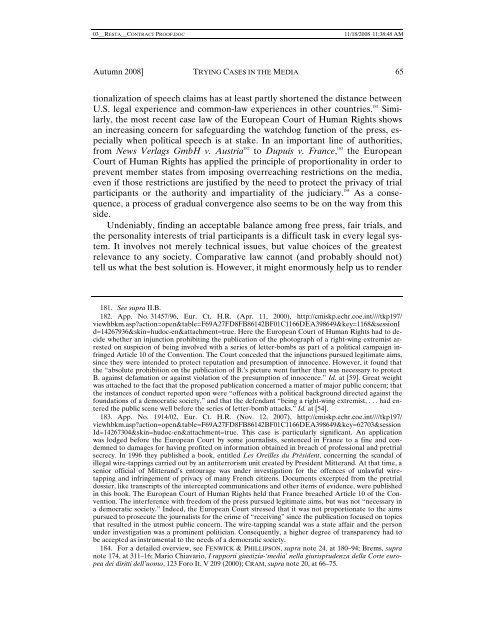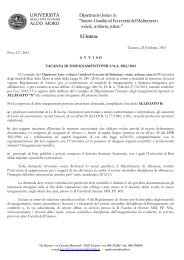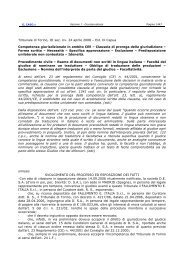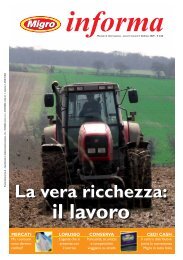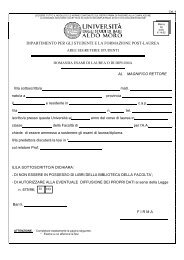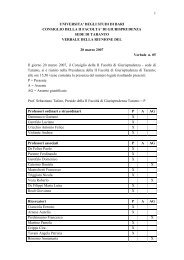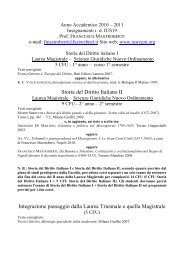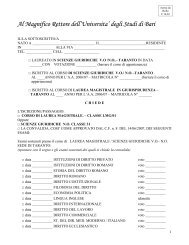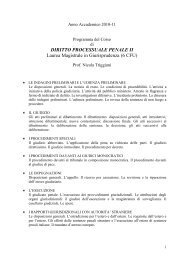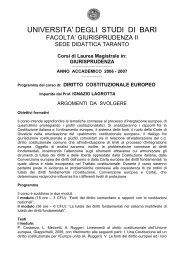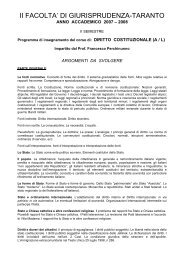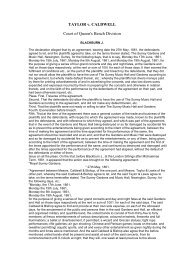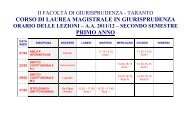TRYING CASES IN THE MEDIA: A COMPARATIVE OVERVIEW
TRYING CASES IN THE MEDIA: A COMPARATIVE OVERVIEW
TRYING CASES IN THE MEDIA: A COMPARATIVE OVERVIEW
You also want an ePaper? Increase the reach of your titles
YUMPU automatically turns print PDFs into web optimized ePapers that Google loves.
03__RESTA__CONTRACT PROOF.DOC11/18/2008 11:38:48 AMAutumn 2008] <strong>TRY<strong>IN</strong>G</strong> <strong>CASES</strong> <strong>IN</strong> <strong>THE</strong> <strong>MEDIA</strong> 65tionalization of speech claims has at least partly shortened the distance betweenU.S. legal experience and common-law experiences in other countries. 181Similarly,the most recent case law of the European Court of Human Rights showsan increasing concern for safeguarding the watchdog function of the press, especiallywhen political speech is at stake. In an important line of authorities,from News Verlags GmbH v. Austria 182 to Dupuis v. France, 183 the EuropeanCourt of Human Rights has applied the principle of proportionality in order toprevent member states from imposing overreaching restrictions on the media,even if those restrictions are justified by the need to protect the privacy of trialparticipants or the authority and impartiality of the judiciary. 184As a consequence,a process of gradual convergence also seems to be on the way from thisside.Undeniably, finding an acceptable balance among free press, fair trials, andthe personality interests of trial participants is a difficult task in every legal system.It involves not merely technical issues, but value choices of the greatestrelevance to any society. Comparative law cannot (and probably should not)tell us what the best solution is. However, it might enormously help us to render181. See supra II.B.182. App. No. 31457/96, Eur. Ct. H.R. (Apr. 11, 2000), http://cmiskp.echr.coe.int////tkp197/viewhbkm.asp?action=open&table=F69A27FD8FB86142BF01C1166DEA398649&key=1168&sessionId=14267936&skin=hudoc-en&attachment=true. Here the European Court of Human Rights had to decidewhether an injunction prohibiting the publication of the photograph of a right-wing extremist arrestedon suspicion of being involved with a series of letter-bombs as part of a political campaign infringedArticle 10 of the Convention. The Court conceded that the injunctions pursued legitimate aims,since they were intended to protect reputation and presumption of innocence. However, it found thatthe “absolute prohibition on the publication of B.’s picture went further than was necessary to protectB. against defamation or against violation of the presumption of innocence.” Id. at [59]. Great weightwas attached to the fact that the proposed publication concerned a matter of major public concern; thatthe instances of conduct reported upon were “offences with a political background directed against thefoundations of a democratic society,” and that the defendant “being a right-wing extremist, . . . had enteredthe public scene well before the series of letter-bomb attacks.” Id. at [54].183. App. No. 1914/02, Eur. Ct. H.R. (Nov. 12, 2007), http://cmiskp.echr.coe.int////tkp197/viewhbkm.asp?action=open&table=F69A27FD8FB86142BF01C1166DEA398649&key=62703&sessionId=14267304&skin=hudoc-en&attachment=true. This case is particularly significant. An applicationwas lodged before the European Court by some journalists, sentenced in France to a fine and condemnedto damages for having profited on information obtained in breach of professional and pretrialsecrecy. In 1996 they published a book, entitled Les Oreilles du Président, concerning the scandal ofillegal wire-tappings carried out by an antiterrorism unit created by President Mitterand. At that time, asenior official of Mitterand’s entourage was under investigation for the offences of unlawful wiretappingand infringement of privacy of many French citizens. Documents excerpted from the pretrialdossier, like transcripts of the intercepted communications and other items of evidence, were publishedin this book. The European Court of Human Rights held that France breached Article 10 of the Convention.The interference with freedom of the press pursued legitimate aims, but was not “necessary ina democratic society.” Indeed, the European Court stressed that it was not proportionate to the aimspursued to prosecute the journalists for the crime of “receiving” since the publication focused on topicsthat resulted in the utmost public concern. The wire-tapping scandal was a state affair and the personunder investigation was a prominent politician. Consequently, a higher degree of transparency had tobe accepted as instrumental to the needs of a democratic society.184. For a detailed overview, see FENWICK & PHILLIPSON, supra note 24, at 180–94; Brems, supranote 174, at 311–16; Mario Chiavario, I rapporti giustizia-‘media’ nella giurisprudenza della Corte europeadei diritti dell’uomo, 123 Foro It. V 209 (2000); CRAM, supra note 20, at 66–75.


